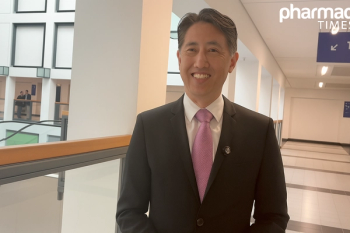
Pharmacy Practice in Focus: Health Systems
- November 2025
- Volume 14
- Issue 6
Prevention for Protection: The Evolution of Heart Failure Management
Key Takeaways
- A paradigm shift towards integrated HF management, emphasizing prevention, is crucial for improving patient outcomes and reducing hospitalizations.
- Pharmacists play a vital role in primary, secondary, and tertiary prevention, optimizing medication adherence and managing comorbidities.
Heart failure prevention can be integrated into health systems to optimize care.
Cardiovascular disease (CVD) is a leading cause of death worldwide. Heart failure (HF), a particularly severe presentation of the disease, is the most common cause of hospitalizations in the US, despite the trove of new treatments, devices, and management strategies that have come to light in the past decade. The continued scourge of this condition necessitates an evolution in the way cardiologists, pharmacists, and providers across health systems think about HF management.1
Specifically, there must be a paradigm shift to a more integrated approach of HF interventions that more thoroughly embeds prevention efforts in the continuum of care. This was recently highlighted in a joint scientific statement from the Heart Failure Society of America and the American Society for Preventive Cardiology. In the statement, dozens of experts discussed the importance of prioritizing HF prevention efforts more broadly, along with concurrent therapeutic interventions across a patient’s lifespan.1
“The statement reframes HF as a preventable condition rather than an inevitable outcome, calling for clinicians, [including] pharmacists, to identify and manage risk factors earlier, even decades before symptoms arise,” statement coauthor Craig Beavers, PharmD, FACC, FAHA, FCCP, BCCP, BCPS-AQ Cardiology, CACP, an adjunct associate professor with the University of Kentucky College of Pharmacy, said in an interview with Pharmacy Practice in Focus: Health Systems.2
Primary Prevention
For patients at risk of HF or who are in pre-HF, primary prevention strategies are typically recommended to prevent progression. These interventions constitute primary progression, which helps reduce risk factors in those without HF—including hypertension, obesity, dyslipidemia, and smoking—to prevent its development. Furthermore, this sector of prevention comprises early detection methods, such as using biomarkers or imaging to locate structural or functional changes in patients who may indicate developing HF.1
Guidelines recommend various interventions for patients with observable HF risk factors. For patients with type 2 diabetes (T2D) and established CVD, guidelines recommend sodium-glucose cotransporter 2 (SGLT2) inhibitors to prevent HF-related hospitalizations. In patients with dyslipidemia and established atherosclerotic CVD, statins are recommended to prevent symptomatic HF. Devices are also a primary prevention option; implantable cardioverter-defibrillators are recommended to prevent sudden cardiac death for patients at risk. There also remain numerous drug candidates in development, including baxdrostat (AstraZeneca), which reduced systolic blood pressure in a phase 3 trial.1,3
In any aspect of primary prevention, pharmacists are integral. In health systems, pharmacists help lead hypertension, diabetes, and cholesterol clinics that help directly prevent structural changes associated with HF. By integrating prevention services into their workflow, these clinics can more optimally address underlying risk factors before they progress to worsened outcomes. Pharmacists are also essential in ensuring patients adhere to prescribed medications and initiate dose escalation if goals are not met.1
Beavers highlights that pharmacists have a distinct opportunity to more broadly integrate primary prevention into routine health visits. Many of the aspects of primary prevention, including screening, risk assessment, and patient education, are already present in many health systems, which can allow for easy integration “in any setting,” according to Beavers.2
“For patients, this means HF prevention begins not in the hospital but at routine health visits, through strategies like blood pressure control, glucose management, weight loss, genetic risk screening, and lifestyle interventions,” Beavers said.2
Secondary and Tertiary Prevention
The continuum of prevention continues past the primary phase and into secondary and tertiary phases of HF prevention, Beavers and his fellow authors wrote. Secondary prevention occurs in the context of a patient being diagnosed with HF and focuses on the management of comorbid conditions to prevent a worsening condition. These can include T2D, atrial fibrillation, and obstructive sleep apnea, all of which can contribute to heightened mortality and morbidity. For patients in secondary prevention, their disease is not yet advanced, providing ample opportunities to mitigate progression.1
Health-system pharmacists are uniquely positioned to optimize and uptitrate guideline-directed medical therapy, which can meaningfully alter the progression of HF. Already embedded in specialty HF clinics, these pharmacists possess the necessary skills and are positioned to initiate, titrate, and monitor therapies like SGLT2 inhibitors and β-blockers for comorbidities associated with HF. At follow-up points, pharmacists can ensure medication adherence and review key health indicators, including renal function. If a patient requires it, a pharmacist can help provide early intervention to prevent hospital readmission.1
Tertiary prevention is especially important, despite the lack of well-established recommendations in this sector. This occurs in patients with advanced HF, including those receiving mechanical circulatory support or heart transplantation. In this phase, management of risk factors is essential, as patients living with a left ventricular assist device (LVAD) or a transplant are at unique risk of complications. In this vein, pharmacists play a critical role in managing complex therapies, supporting LVAD programs, mitigating polypharmacy, and monitoring the use of multidrug regimens.1
For patients with an LVAD, Beavers and his team recommend a holistic management strategy that considers necessary interventions following implantation to optimize long-term outcomes while tackling comorbid conditions that patients in this population often harbor. Pharmacists can monitor patients’ vital signs, including blood pressure, which is a critical aspect of preventing vascular shear stress, while also recommending glucagon-like peptide-1 agonists for those who may benefit from weight loss. This integrated approach allows pharmacists to proactively counsel patients on their best course.1
Following heart transplantation, pharmacists must ensure that the risk of cardiovascular complications is mitigated. International guidelines recommend stringent cardiovascular risk management in the realms of blood pressure and cholesterol, with the use of novel medications recommended. With so many varying drug regimens and treatment plans, pharmacists are integral to reviewing drug lists so that HF-exacerbating drugs are avoided. Accordingly, pharmacists in health systems are a critical source of information regarding therapies that may be most beneficial for a specific comorbidity or aspect of posttransplantation management.1
“We know that pharmacists have the knowledge, skill, and accessibility to play a role in this across any setting,” Beavers said. “We can help expand the ability of teams to engage in this type of prevention and disease management work.”2
Role of Pharmacists in Health Systems
HF is a major burden on millions, requiring robust multidisciplinary collaboration across health systems to properly and equitably address and improve patient outcomes. With an emphasis on prevention throughout a patient’s lifespan, combined with expanded, effective treatment options, there is a golden opportunity to optimize HF management and tackle the disease once and for all. In this work, pharmacists in health systems and throughout the spectrum of health care will have a major role.1
Above all, HF should be discussed more prominently in patient discussions with pharmacists and other health care professionals, Beavers said. By speaking earlier to patients—especially those with high cardiovascular risk—about the possibility of HF development, patients may be more inclined to initiate lifestyle interventions and prevention efforts that could improve their outlook.1,2
“I think the key aspect is leaning in or adding the concept of HF prevention as a point of discussion,” Beavers said. “This may include talking about HF as an end point and trying to discuss the importance of screening and management of blood pressure, diabetes, hyperlipidemia, obesity, and smoking as risk factors.”2
Within health systems, pharmacists have established roles as trainers and educators. In establishing a continuum of HF prevention, they must use these skills to educate residents, fellows, nurses, patients, and pharmacist colleagues about best practices throughout each phase of prevention. Equity is also a major aspect of ensuring optimal care for all patients, regardless of their socioeconomic status, and pharmacists can help make sure that underserved patients receive appropriate high-value preventive HF medications.1
This scientific statement is set to serve as imperative guidance toward the future of both cardiology and pharmacy. Using prevention to its fullest will help prevent millions of adverse cardiovascular outcomes in the coming decades and allow patients with HF to live their lives to the fullest while managing their condition.1
“This is the first national road map to formally link preventive cardiology with HF management, emphasizing a collaborative, multidisciplinary model,” Beavers said.2
REFERENCES
1. Lala A, Beavers C, Blumer V, et al. The continuum of prevention and heart failure in cardiovascular medicine: a joint scientific statement from the Heart Failure Society of America and the American Society for Preventive Cardiology. J Card Fail. Published online August 7, 2025. doi:10.1016/j.cardfail.2025.06.013
2. Email Interview With Craig Beavers. Pharmacy Times. Received September 22, 2025. Accessed October 2, 2025.
3. Halpern L. Full phase 3 results indicate reduced blood pressure with baxdrostat in hypertension. Pharmacy Times. Published September 8, 2025. Accessed October 2, 2025. https://www.pharmacytimes.com/view/full-phase-3-results-indicate-reduced-blood-pressure-with-baxdrostat-in-hypertension
Articles in this issue
about 22 hours ago
Looking Forward to 2026: Do More With Lessabout 1 month ago
Tips for Using AI Tools Responsibly During Pharmacy SchoolNewsletter
Stay informed on drug updates, treatment guidelines, and pharmacy practice trends—subscribe to Pharmacy Times for weekly clinical insights.






















































































































































































































